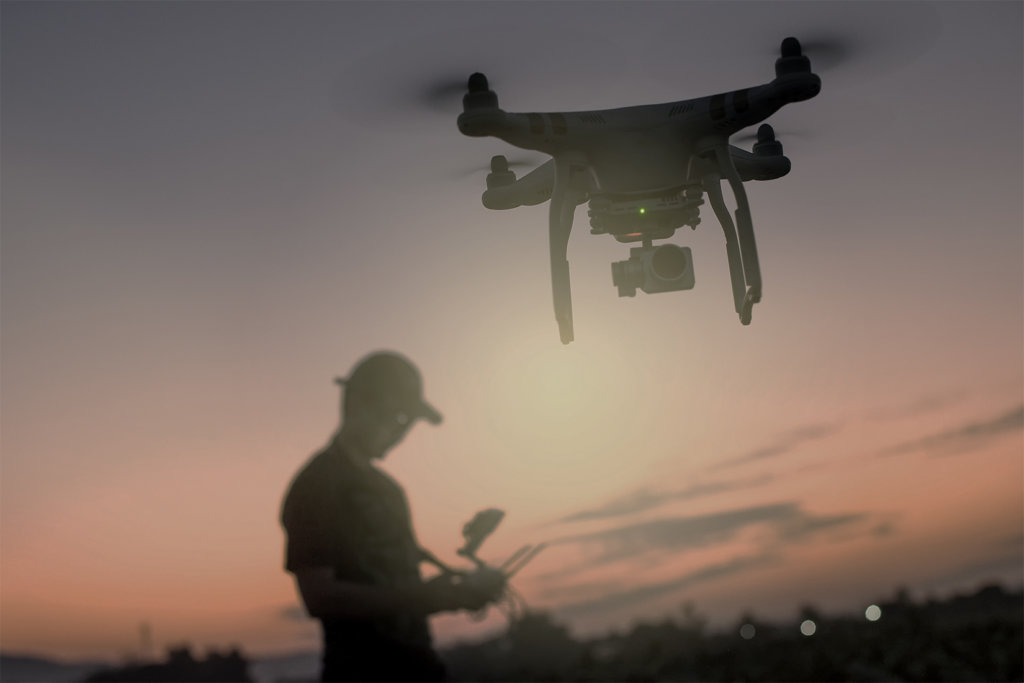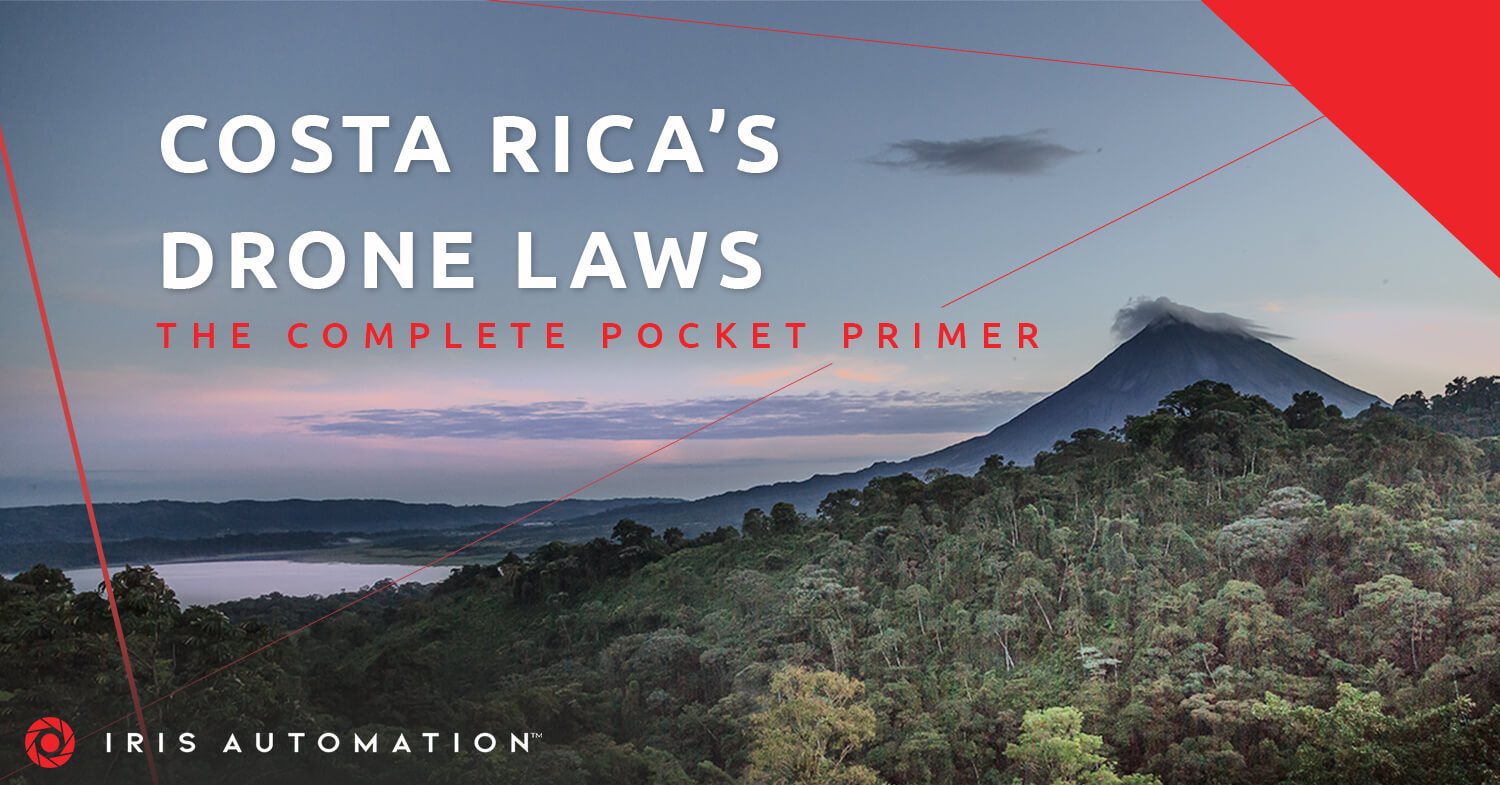by Akaki Kunchulia, Aviation Standards Specialist at Iris Automation
Costa Rica hosts an extraordinary amount of biodiversity, with huge swaths of protected jungle along with volcanoes and coastlines on the Caribbean and Pacific. Using a drone can be a perfect way to explore and capture the beauty and abundance of this relatively small Central American country.
However, you’ll want to make sure that you’re following all of the laws and regulations that are in place to protect the natural beauty, wildlife, and people you’ll find there.
What follows is a complete pocket primer on Costa Rica’s drone laws. Keep reading to learn everything you need to know to operate drones safely in this beautiful country.
What Is a Drone, Anyway?
Before we go any further, let’s get on the same page about what a drone really is. A drone—or unmanned aerial vehicle (UAV)—is a pilotless aircraft that a hobbyist or professional controls with a ground-based controller.
Some drones are very small, while others are large. They can also be classified depending on range. For example, some fly at very close range, while others can cover much farther distances. That said, most drones can only travel within one mile of their controller.

Costa Rica Drone Rules: What You Need to Know
Before flying a drone in any country, you need to make sure to look into the laws and regulations, which tend to differ on a country-by-country basis.
Drones are entirely legal in Costa Rica. Costa Rica’s National Aviation Authority, “Directorate General of Civil Aviation (DGAC),” regulates drone use in the country using the following criteria.
Depending on the nature of your drone operations, different rules apply to other use cases; most drone operations are divided into the categories:
- Recreational drones (Hobbyists), and
- Commercial drones
Recreational drone users are not required to register or have a license to fly a drone, but they have to comply with the operational rules discussed below.
There are a set of rules for the commercial drone operator to adhere to until you start flying in Costa Rica. To obtain an operational certificate, an applicant has to:
- Be at least 18 years old
- Have a high school diploma
- Conduct 48 hours of theoretical and 10 hours of flying course
Weight
You don’t need to register your drone with DGAC if it weighs less than 25kg (55 pounds). If your drone exceeds this weight, you are required to register it with the Costa Rican authorities. These weight requirements are similar to the rules around the world. DGAC further classifies drones based on weight.
- Micro – Less than 100 grams
- Small – Less than 2kg
- Light – Less than 25 kg
- Large – Less than 150 kg
Always be aware of your surroundings when setting out with a drone in order to avoid running into trouble.
General
DGAC determined specific places and procedures for flying drones in Costa Rica. Drone flights are not allowed within an 8 km (5m) radius of a controlled airport. In general, you cannot operate in controlled airspace and the flight altitude should not exceed 400 ft. In addition to this, you cannot fly your drone closer than 30 meters (100 ft) to any building or construction.
You should always be aware of flying over other people’s property and respect their privacy. As a rule of thumb, drone flights are not allowed over gatherings of people, near law enforcement activities, and emergencies.
DGAC determined specific sensitive areas where drone flights are strictly prohibited. This list includes a presidential palace, security and military facilities, prisons, Arenal volcano, Zurqui tunnel, etc. There are no specific guidelines for drone flights in the Costa Rican national parks. We highly recommend checking with local authorities if drone flights are allowed in particular locations.
Like other countries, in Costa Rica, you can only fly a drone within Visual Line of Sight (VLOS), During daylight hours, and under Visual Flight Rules (VFR). During VLOS operations, your drone should not be farther than 500 meters (0.3 m) from you. You have to constantly maintain situational awareness of the airspace you operate and not fly your drone close enough to another aircraft so that it can become a collision hazard.
If you want to conduct drone operations that are not covered by the above requirements, you can always contact DGAC and ask for special permissions.
Drone Use in Costa Rica: FAQ
Is Costa Rica a Good Place to Fly a Drone?
As long as you know and follow the rules and regulations, you should have a great time flying drones in Costa Rica. There are numerous extinct volcanoes to explore, as well as several active ones. Be sure to always be very mindful of wildlife when operating a drone in Costa Rica, or anywhere. Make sure to be aware of your surroundings at all times.
Can You Fly Drones at Popular Costa Rican Attractions?
No-fly zones include Arenal Volcano, La Palma passage, Zurqui Tunnel, el Murcielago Police Training Center, La Reforma Prison, The Presidential House, El Ministerio de Seguridad Publica—do not attempt to fly a drone at any of these places. That being said, there are many vibrant and beautiful places to fly drones—just none where crowds of people may be gathered.
The Bottom Line
Whether you’re a local citizen who loves drones or you’d just like to check out its natural and cultural resources, Costa Rica is a great place to fly a drone. Just remember to do it safely and with the above-mentioned regulations in mind.
Follow these rules, and you’ll have no trouble flying a drone around Costa Rica. It’ll be an unforgettable experience.
For more information about how Iris Automation can help you fly drones safely all around the world, contact the team today.

